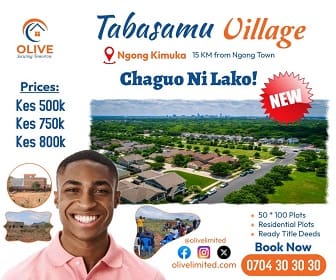How “The Ngorika settlers” implemented a sustainable community-owned water project

The Ngorika Water Project is situated in Ngorika Sub location of Dundori Division in Nyandarua District. This area was part of the White Highlands and the land was owned by a British settler. After independence the Kenya Government bought this land and settled some landless people from part of the “colonial native reserves” in Central Province in the 1970s. Ngorika sub location therefore became Ngorika Settlement. A little background of these “new settlers” is necessary for us to appreciate their pressing needs for a sustainable water supply to realize their dreams. What were the White Highlands?
The White Highlands were prime lands in Kenya which were allocated by the colonial government to white settlers mainly as a reward for serving in the British army during World War I. The land in question was equivalent to three million hectares of which over half was high potential arable land suitable for cash crop farming – coffee, tea and sugar plantations. The rest was suited for large scale livestock farming and other purposes. There were over 3600 farms with land holding sizes ranging from 400 to over 800 hectares although in the large scale livestock farming some of the land holdings were of more than 20,000 hectares.
The White Highlands constituted about 21,000 of Kenya’s 356,000 square-kilometer area or about six percent of Kenya’s land. This was substantial land holding by a small European population (3600 farms and by implication families) since 68 per cent of Kenya’s land is remote and unsuited for farming. The White Highlands occupied six per cent of the remaining 32 % of arable land while the remaining 26 per cent of the land was shared by about six million Africans – “the native reserves”.
The reserves occupied about 84,000 square kilometers. Each of the reserves or collection of land units was reserved for the use of a particular ethnic group. This laid a firm framework for ethnicization of the Kenyan society. The administration placed a firm social-political boundary between the reserves. By doing so, the administration succeeded preventing ‘social-political’ interactions between the reserves and therefore prevented inter-ethnic political relations. This had the effect of solidifying ethnic identities and was the cause of the “tribalism woes” which bedevil integration of Kenya as a one nation causing the bottlenecks in the development in modern Kenya.
The “new settlers” in Ngorika were hard working people wishing to undertake dairy and horticultural farming activities to raise their standards of living. The potential for commercial dairy and horticultural farming existed but a sustainable water supply for human consumption, irrigation and dairy cattle needs remained a major constraint to the Ngorika community realizing their dreams. Water sources in the area were from two springs and a river flowing through Ngorika. How did the “new settlers” get a self-sustaining water project implemented in Ngorika? Join the author of “Life Lessons of an Immigrant” as he narrates how Ngorika Community Water Project was implemented ensuring not only the infrastructural needs were addressed but also management, accounting and financial systems were installed to ensure sustainability. Buy your copy at www.Amazon.com or for further details visit: https://johnmakilya.com. However, if you wish to get an autographed copy of the book please call or text the author at 6176538386.









